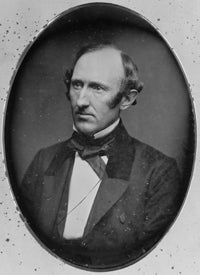Abolitionist Wendell Phillips, who graduated from Harvard Law School in 1833, was a nationally know celebrity during his lifetime. On the bicentennial of his birth, a symposium held at HLS June 2-4, cosponsored by the Charles Hamilton Houston Institute for Race and Justice, focused on the life and legacy of the social reformer, and the questions they raise for those working for social justice today.
In his keynote address, James Brewer Stewart, Phillips’ biographer, an expert on antebellum abolitionism and founder of Historians Against Slavery, described Phillips’ “extraordinary amalgam of talent, commitment, intellect and presence.”
Stewart, professor of history emeritus at Macalester College, observed that one of the abolitionist’s greatest tools was his talent as an orator. “In the greatest era of oratory the United States has ever experienced,” said Stewart, Phillips was “the greatest of those orators.” Phillips conveyed a sense of utter spontaneity when he spoke, said Stewart, “as if he were making his private world public,” tapping into the “emotional and intellectual architecture that made him the person he is.”
The descendant of an influential Boston family, Phillips began his adult life with enormous wealth, but when he died in 1884 he’d spent most of his fortune supporting the causes he believed in. In addition to fighting slavery and racism— before and after the Civil War—Phillips worked to advance the rights of women and Native Americans and for labor reforms.
Stewart concluded that because of the power of Phillips’ oratory, without ever holding office—a career in politics would have meant compromise—by the end of his life, Phillips had become one of the most powerful political actors in the United States.
The symposium included a related walking tour of Boston and an exhibit of Phillips-related material at the Houghton Library at Harvard University (which holds the largest collection of Phillips’ papers). The exhibit, “Peace if possible, or justice at any rate: Wendell Phillips at 200,” will be on view until Aug. 26 in the Amy Lowell Room of the library.
